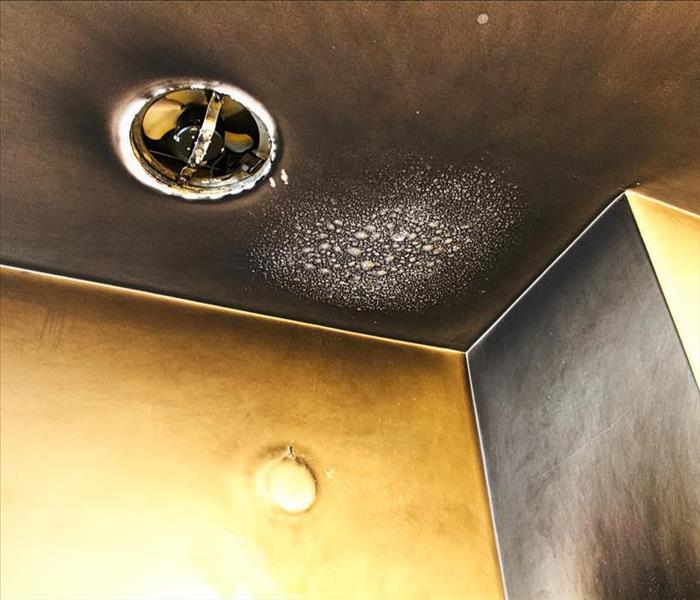Can Soot-Covered Appliances in My Upper West Side Kitchen Survive a Remodeling Fire?
5/27/2020 (Permalink)
SERVPRO Has the Skills, Products, and Equipment to Restore High-End Appliances After Upper West Side Fire Damage
The irony is not lost when your brand-new artisan-grade appliances are coated in smelly, sticky residues after an electrical short in your rehabbing contractor’s equipment sets your Upper West Side apartment on fire. You finally proceeded with a long-needed kitchen remodel, only to have the bright, clean appliances purchased in anticipation of a redone and enhanced food preparation area reduced to a condition even worse than the grease encased decades-old kitchen suite it replaced.
Why Are Restorers Wrapping My Kitchen in Plastic?
Any blaze creates dangerous fumes and potentially hazardous fire damage to your Upper West Side home. residues. Upper West Side residents in elegant older apartment buildings can risk exposure to a wide range of toxic airborne and settled debris that could cause illness or injury. Our project manager recommends containment with 1.6 mil polyethylene and employment of air-scrubbing equipment to minimize debris spread. Our technicians wear personal protective equipment (PPE) to limit skin and respiratory contact.
What Hazardous Substances Concern Professionals?
Older buildings can contain lead-based paint, asbestos, and many different chemicals unleashed by the fire. When electrified circuits contribute to the fire, a term rarely heard today--polychlorinated biphenyls or PCBs--can add an extremely worrisome substance to the mix if part of your building’s electrical system still utilizes applications using these materials. If SERVPRO suspects the involvement of these hazards, we arrange for certified technicians to abate the toxins.
How Will Fire and Smoke Restoration Technicians (FSRT) Clean My Appliances?
Once we have the specified hazards remediated, our Institute of Inspection, Cleaning and Restoration Certification (IICRC)-trained crew assess the various fire residue-damaged appliances. We consider two major, intersecting aspects of the damage:
The characteristics of the surfaces affected:
Are they solid or porous?
What are the materials used?
- Glass
- Plastic
- Composite
- Metal
- Wood-faced (build-in units)
- Laminate
- Veneer
- Hardwood
What kind of a finish do they have?
- Matte
- Glossy
- Brushed
- Stained or painted
The characteristics of the soot deposited on said surfaces:
Usually, an electrical fire produces thick, sticky soot. Protein-based residues can also form if food or grease in the kitchen heats up during the blaze. The protein-based residue is highly malodorous and attaches to the appliances like a lacquer or varnish, yellowing, or otherwise discoloring them. Although the combination of the two types of soot presents a cleanup challenge, it is one we see frequently and resolve successfully.
How Do We Use the Data About the Appliance Surface and the Soot?
When we match cleaning products to soot, we always keep in mind that we want the residue to loosen, become suspended in solution, and rinse away. With large and stationary objects such as appliances, we use a spray and wipe technique to apply the product, agitate, and remove the cleaner and the dissolved or suspended residue.
What kind of product should we use?
We always keep in mind that “like dissolves like.” If the soot is determined to be water-based, we use a water-based cleaner. Protein-based and some synthetic-based soots need a solvent or oil-based cleaner. In multi-soot circumstances, detergent bridges the difference.
What kind of agitation should we use?
The durability of the surface helps us judge what kind of scrubbing or addition of abrasives an appliance cabinet can endure. We want to make sure a little “elbow grease” does not remove or dull a finish. Adding a lubricant can protect the surface while allowing a gritty compound or tool to exert gentle abrasion to remove residues that cling persistently.
How long should the cleaner be in contact with the surface?
Adjusting the pH of a cleaner can help break the bond between the residue and the surface. Permitting dwell time of a cleaner to exceed suggested limits can corrode, tarnish, pit, or etch some appliance finishes. If laminate applied over another material makes the appliances look like built-ins, we are careful not to soak the surfaces as delamination might occur.
What extremes of temperature can the surface handle?
Raising the temperature of a cleaning product urges the molecules to move faster during a chemical reaction. Appliances featuring plastics might experience warping if the temperature rises too high.
What can professionals do about discoloring?
Bleaching either adds oxygen or removes oxygen from the chemical structure of residues. Enzymes break up organic residues, permitting our technicians to wipe them and their staining away.
Have confidence that the professionals from SERVPRO of Upper West Side can assess your kitchen’s fire damage and plot a course to make the soot and smells “Like it never even happened.” We await your call 24/7 at (917) 498-1362.






 24/7 Emergency Service
24/7 Emergency Service
